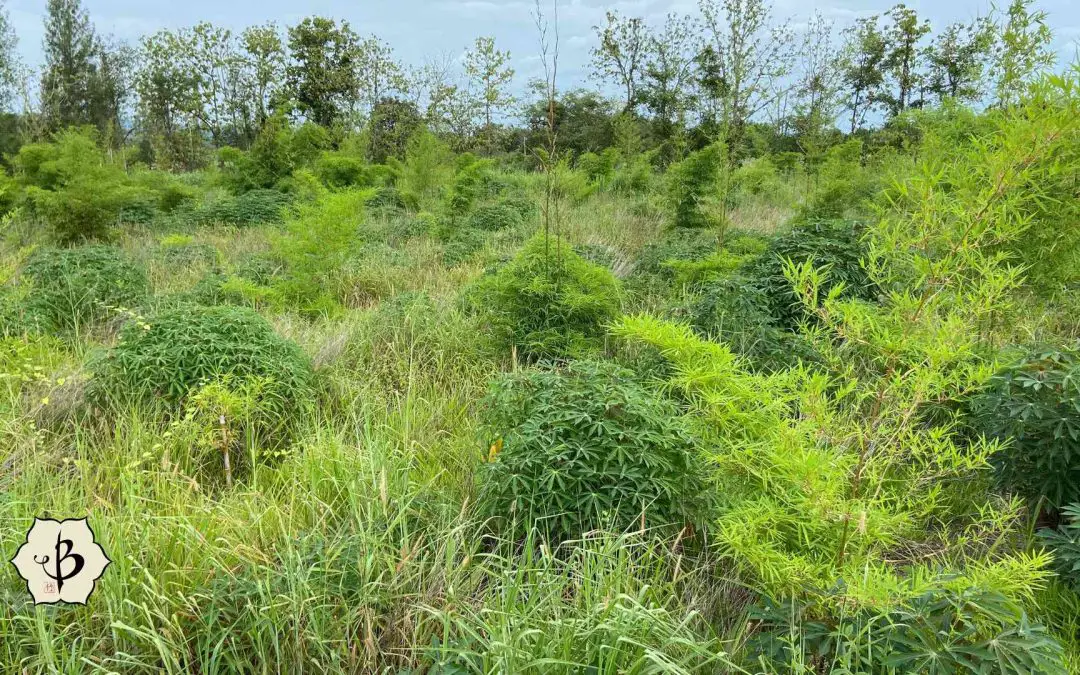As the impacts of climate change and environmental degradation grow more and more evident, so does the need for solid, perceptible solutions. And as much as we’d like to develop a silver bullet that can swiftly remedy the climate crisis, once and for all, it’s more likely going to require a prolonged series of divergent strategies. But if anything comes close to offering a panacea for deforestation and ecological devastation, it’s bamboo. Among its long list of benefits, bamboo is an ideal plant for soil enrichment and land restoration.
A fast-growing perennial grass that can grow in almost any environment, bamboo has several traits that make it vital for restoring degraded farmland and denuded forestry, by preventing erosion, capturing carbon, and regenerating the topsoil. To survive, bamboo requires little in the way of nutrients, so it can act as a hardy pioneer crop in poor, depleted soil. Furthermore, its vigorous root system has a remarkable way of holding the topsoil together, reducing the risk of floods and landslides. At the same time, the sturdy culms that bamboo produces above ground have proven extremely valuable for construction and other industrial uses.
NOTE: This article first appeared in December 2021, most recently updated in April 2024.
Why the need for land restoration?
We like to think of the earth as one big, happy ecosystem that can nurture itself in the grand cycle of living and dying. But many parts of the planet have been catastrophically scarred — whether by natural disasters, human activities, or both — and they could really use our help.
Agriculture
Unsustainable agricultural practices, especially in the last several decades, have taken more from the soil than they have given back. In Europe and the United States, this has involved industrial-scale monoculture and widespread pesticide use. Meanwhile, slash-and-burn farming in developing countries has been gradually eating away at our most precious and diverse tropical rainforests.
All the world over, growing populations need to get more from the land just to survive. And while agriculture depletes the nutrients and the topsoil, over-logging is destroying whole forests, altering local weather patterns, and literally uprooting the infrastructure that keeps the soil in place.
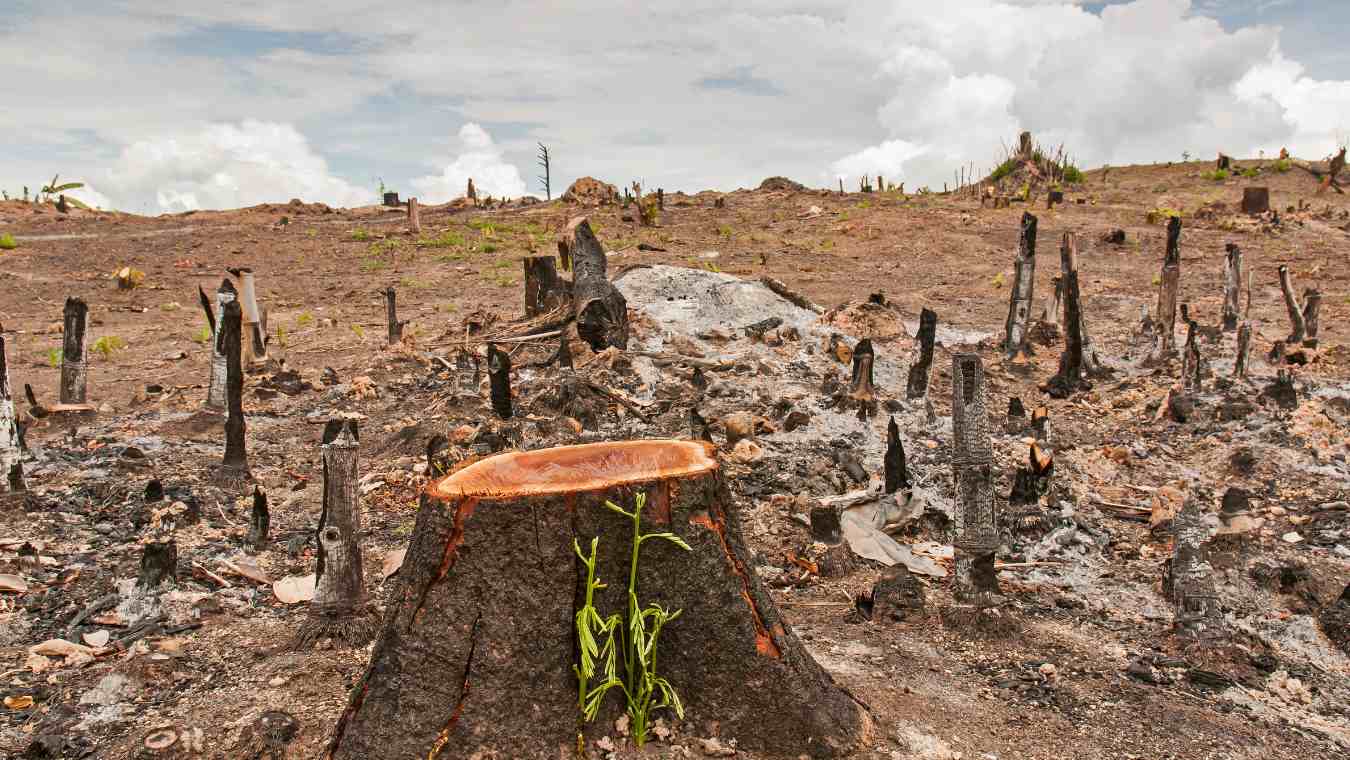
Weathering the storm
Finally, extreme weather, likely the result of climate change, has only exacerbated these issues. A few years of drought parch the land. And then, unprecedented rains tear through, causing flooding and landslides. Consequently, great swaths of arable land are left wasted and unfarmable.
These problems have hit hardest in some of the poorest parts of the world, like Kenya, Malawi, and southern Asia. And even where the landscape is still intact, local farmers face the imminent threat of more floods and landslides that could easily wipe out their crops.
Bamboo to revive and regenerate the land
Bamboo might not be the silver bullet that can solve all of our problems. But it can surely help with a lot of them. And when it comes to land restoration and topsoil protection, nothing beats bamboo.
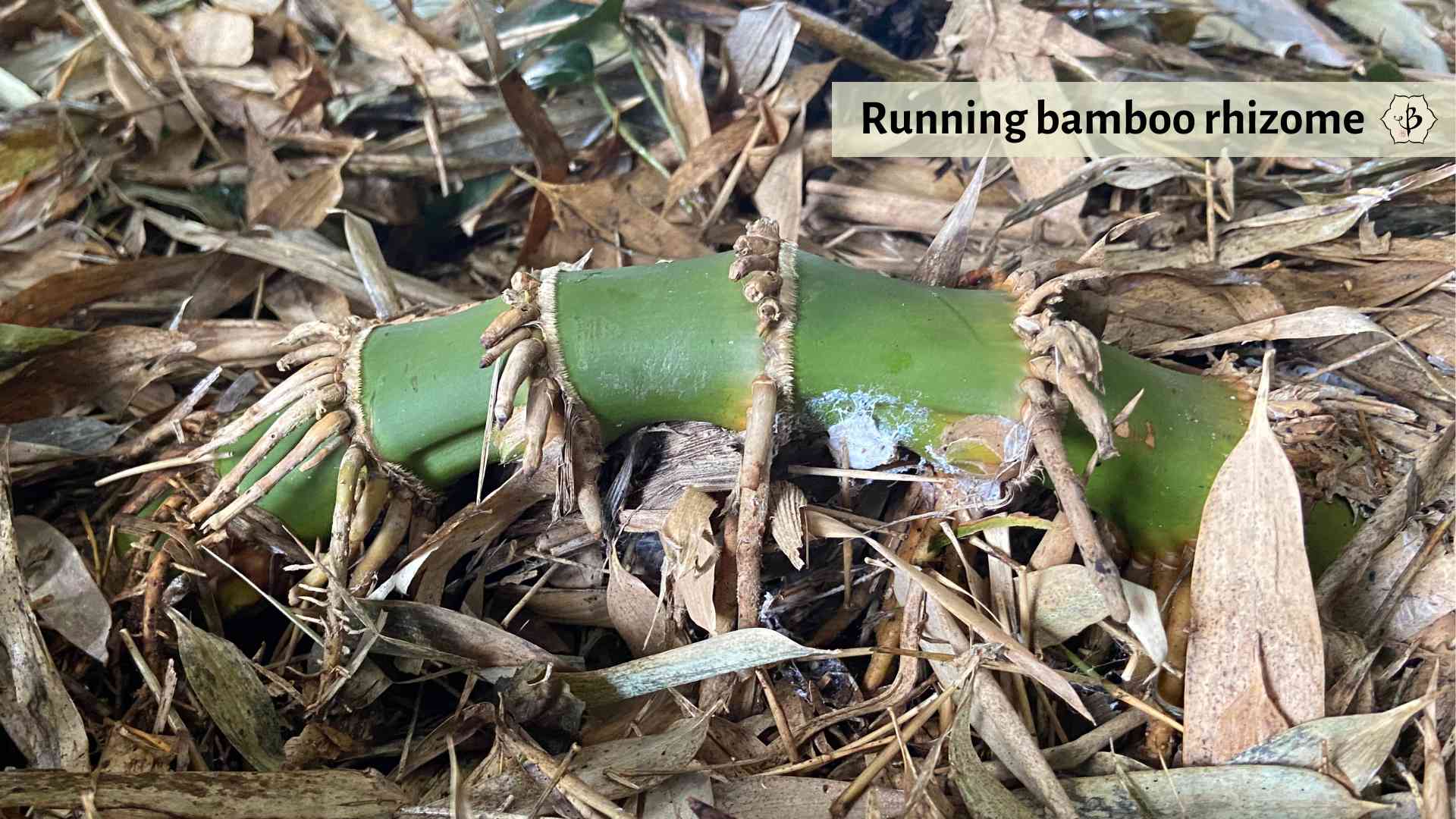
Pioneer plant
For starters, bamboo is a great pioneer plant. You can plant it in poor soil where few other plants will grow. At least not very interesting and useful plants. This makes bamboo an especially good choice for cultivating in areas that have been over-farmed or otherwise degraded by floods or slash-and-burn tactics.
So for large bamboo plantations, it makes good sense to plant on old farmland that is no longer rich enough to support wholesome food crops. It’s also a good choice in areas that were formerly used for commercial forestry but have since been abandoned. But it’s certainly not a wise idea to go cutting down forests and replacing them with bamboo, even if bamboo is known to generate more oxygen and store more carbon than an equal area of trees.
Furthermore, bamboo grows very quickly. So in a reforestation project, it can soon start providing shade for other young plants. Its tenacious roots will also hold the topsoil together, making the land more hospitable for new seedlings.
Bamboo roots
The complex root systems of bamboo make it especially effective at holding the earth together, preventing erosion and landslides. For this reason, bamboo is an excellent crop in areas prone to flooding, so long as the roots don’t remain saturated for long periods. But the roots and rhizomes form a tight mesh that keeps the ground from washing away in heavy rains.
At the same time, these vigorous roots and rhizomes can loosen soil that’s rocky or heavy with clay. Breaking up the clay and bedrock, bamboo can draw up groundwater and bring it closer to the surface.
When the rains come, the complex network of bamboo roots will retain water and moisture that might otherwise wash away quickly and take much of the topsoil with it. Many developing countries in Asia and Africa have begun campaigns to plant more bamboo for all of these reasons.
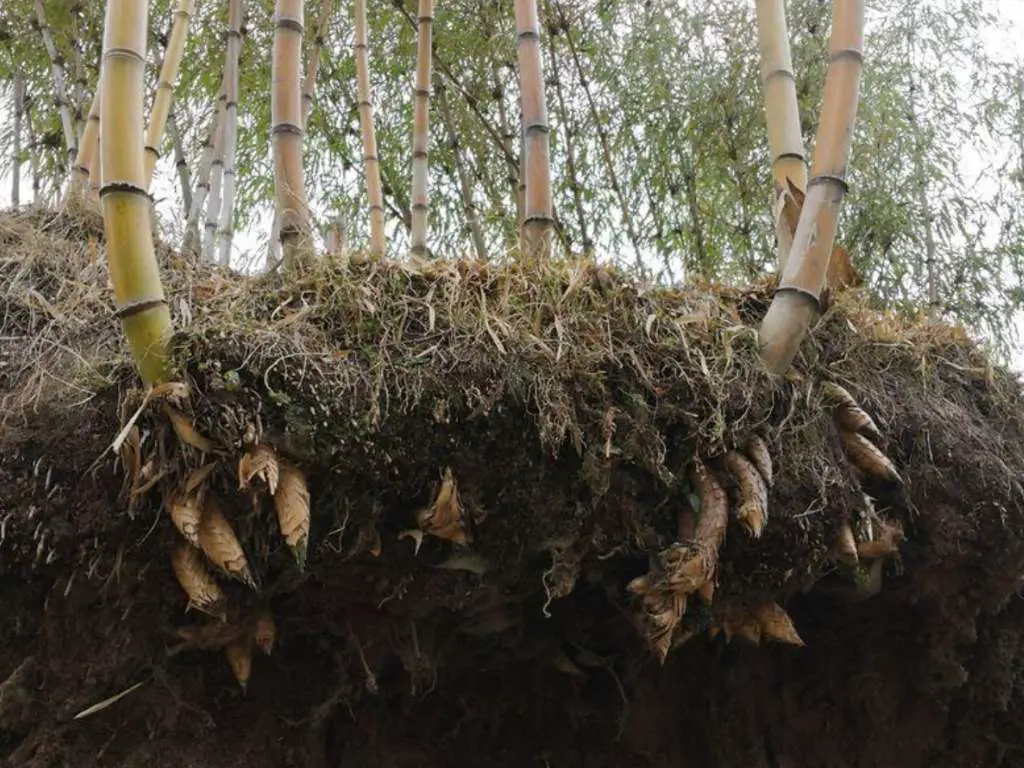
Helping the humus
If you’re eating Middle Eastern food, you might request another helping of hummus. But humus is something completely different. It’s the organic component of soil formed as leaves and other organic matter break down.
Over time, as the bamboo gets established and starts aging, bits of root and rhizome decay, enriching the soil. And again, the roots continue to hold that organic matter in place.
Also, most bamboo species have dense foliage, and those leaves periodically fall off and form mulch around the base of the plant. This layer of mulch insulates the roots and helps the soil retain moisture, to the benefit of the bamboo and other plants close by. After a few years, you might have soil rich enough to plant a row of vegetables in between the bamboo, while only requiring a modicum of manure to fortify the veggies.
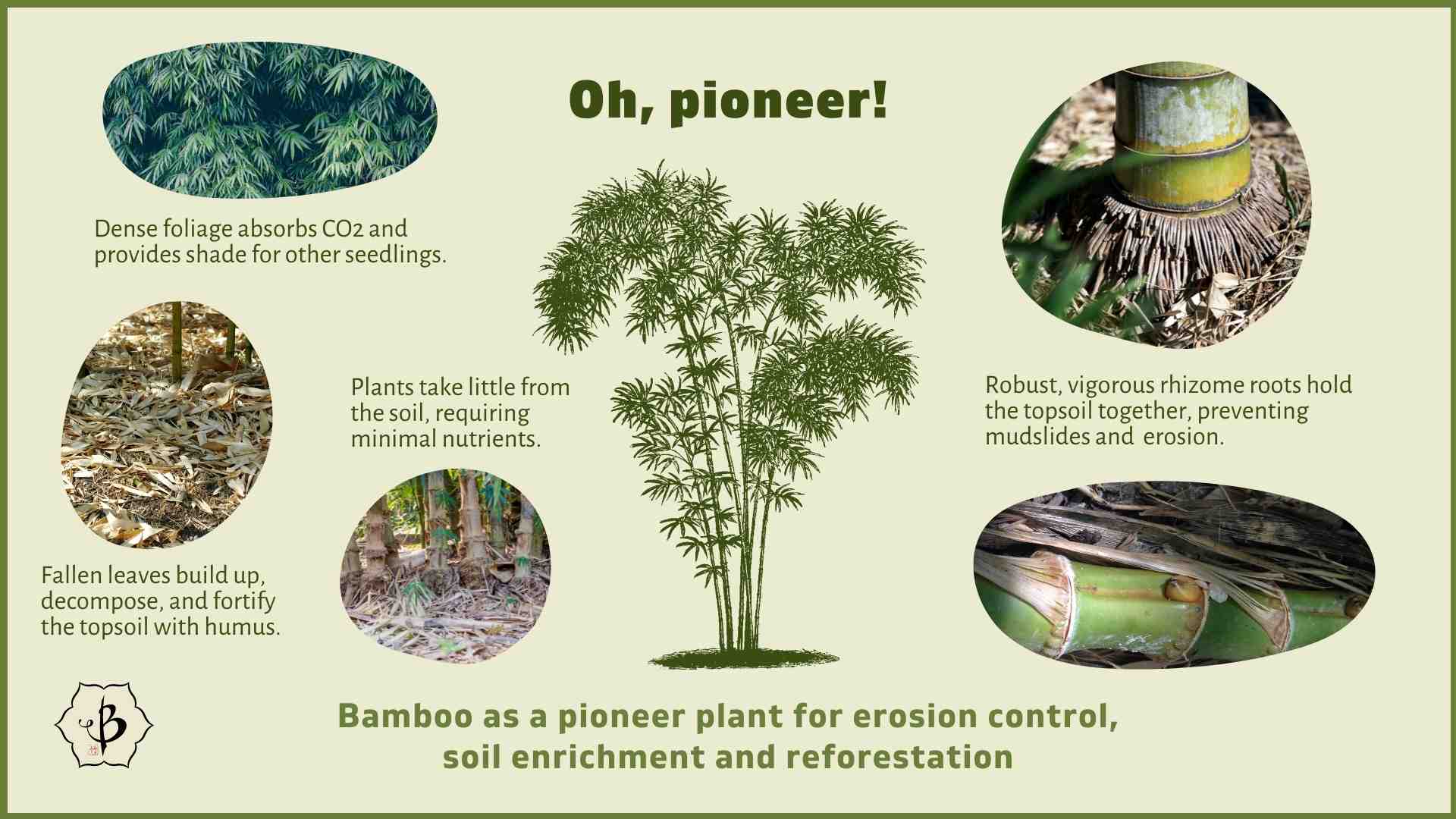
Promoting precipitation
Like other reforestation projects, adding bamboo to the landscape can also change local weather patterns and bring more rainfall. As the roots of bamboo bring groundwater up from the aquifers, the treetops have a way of creating turbulence and slowing down the clouds. Instead of just blowing past, they are more likely to linger and release some rain.
See our in-depth article on Planting bamboo to increase rainfall to learn more.
A practical solution
Finally, bamboo is an extraordinarily useful crop. While the roots hold the soil together and the fallen leaves contribute to the humus, you can continually harvest the mature poles for any number of uses. And harvesting can be done without any undue impact on the vibrant root structure. In fact, by cutting down older culms (aka stalks or poles), you encourage the bamboo roots to expand and produce new shoots.
Consequently, rural communities dealing with degraded soil and loss of farmland can see two significant benefits from planting bamboo. Not only will it hold their land in place, preventing or mitigating future disasters, but it can also provide economic opportunities as a versatile cash crop.

Ongoing stimulation
If you’re as excited about bamboo’s promise and potential as we are and want to learn more about how it can restore the land, reinvigorate the economy, and reverse the climate crisis, then take a look at some of these other stimulating articles.
- Growing bamboo for erosion control
- Bamboo and the Great Green Wall
- Bamboo for water purification
- 10 Rules for reforestation
- Bamboo as a pioneer crop
- Will bamboo become the next palm oil?
And if you really want to dig deep, consider visiting the World Soil Museum in Wageningen, Netherlands.
FEATURE IMAGE: Planting bamboo in Thailand to regenerate land formerly cultivated for cassava with the heavy use of chemical fertilizers. Photo by Fred Hornaday.

